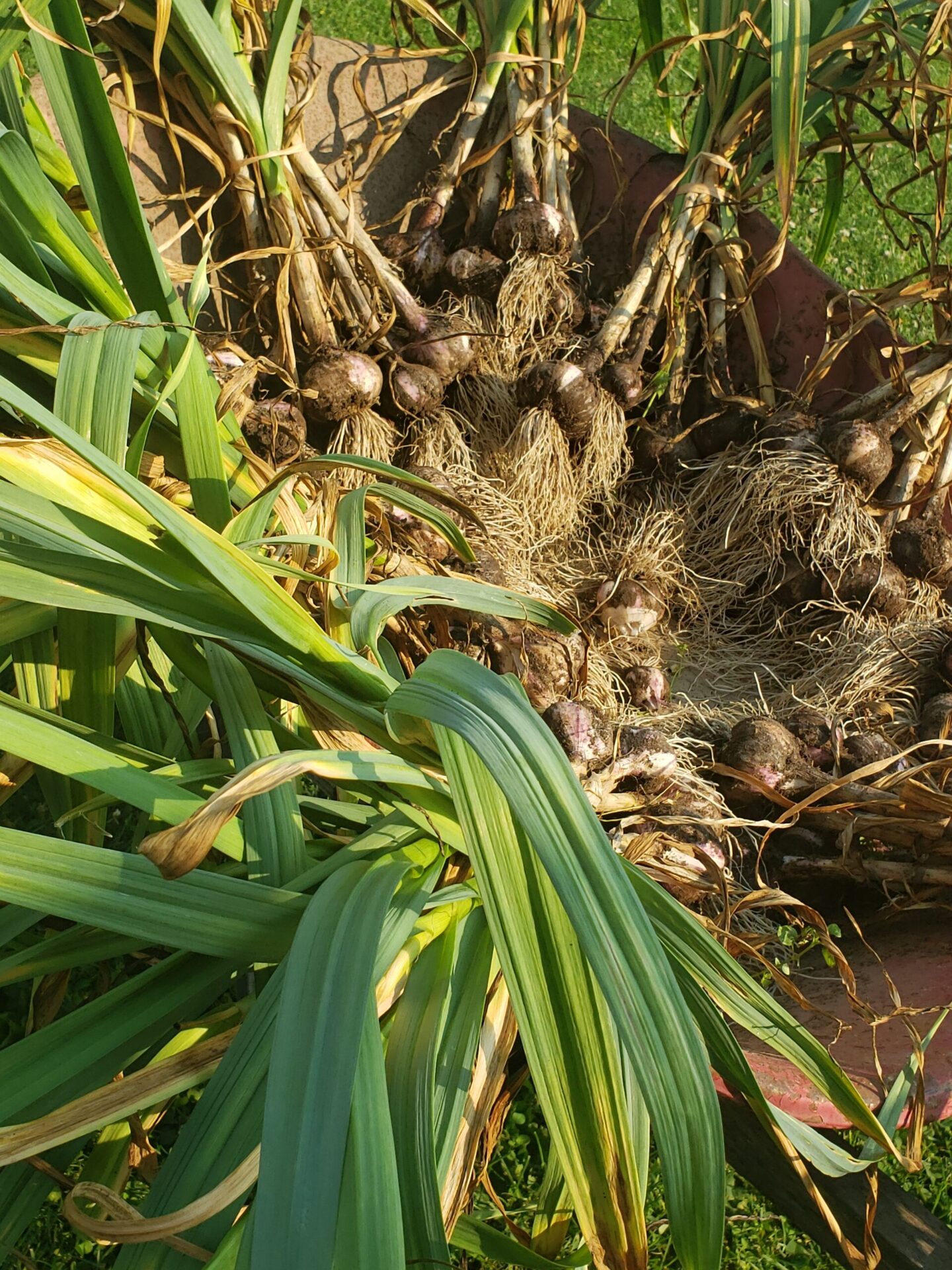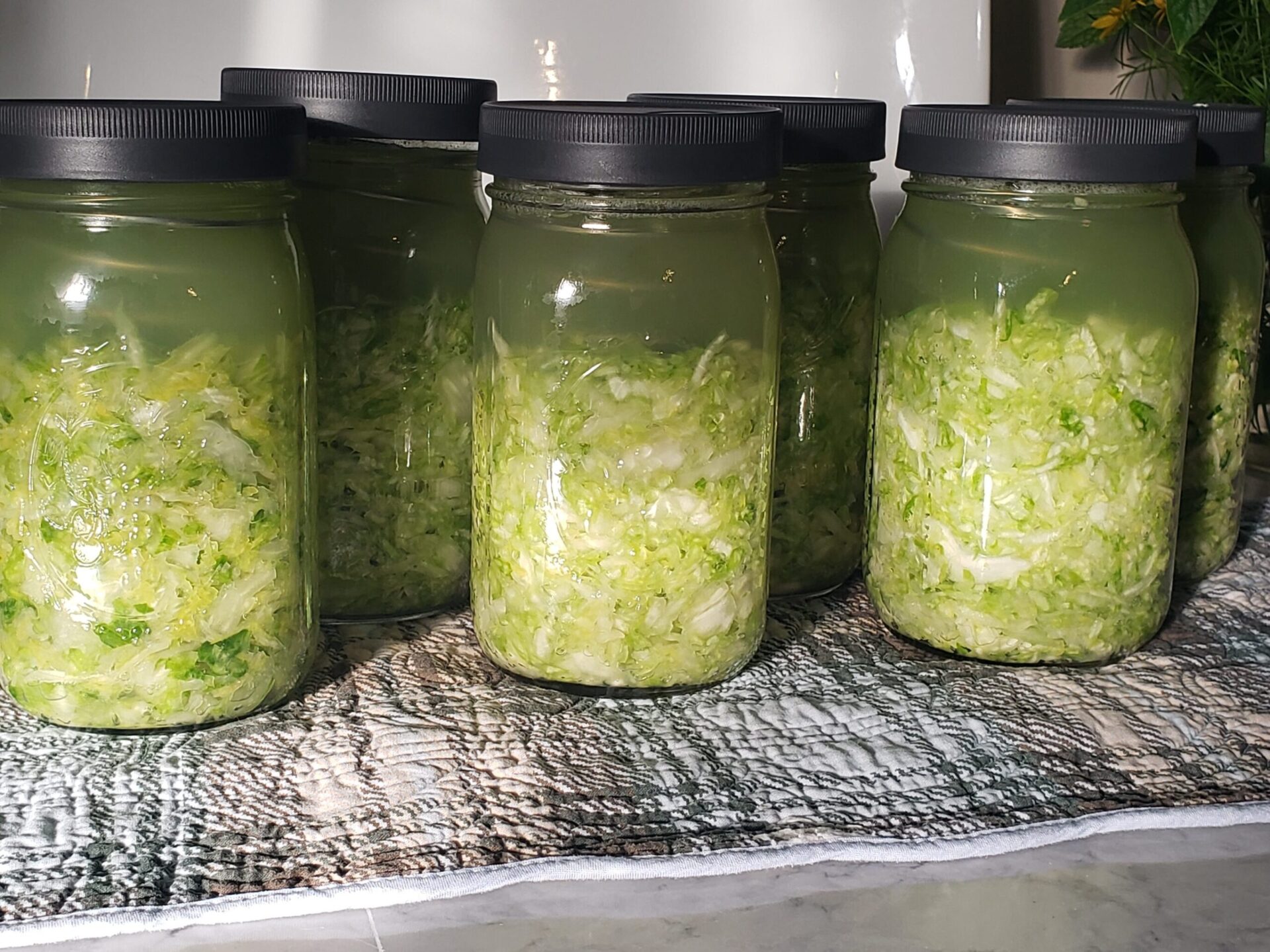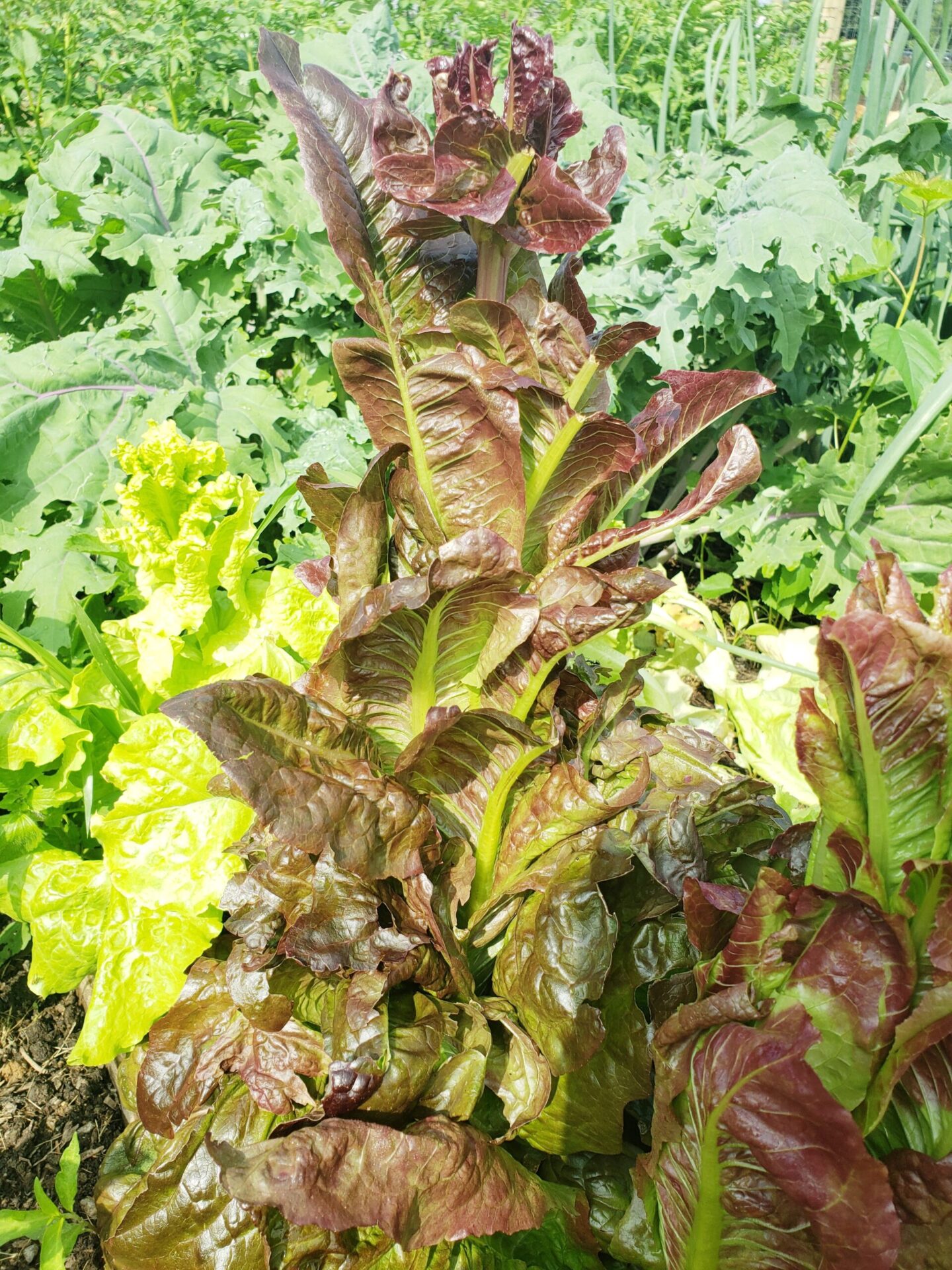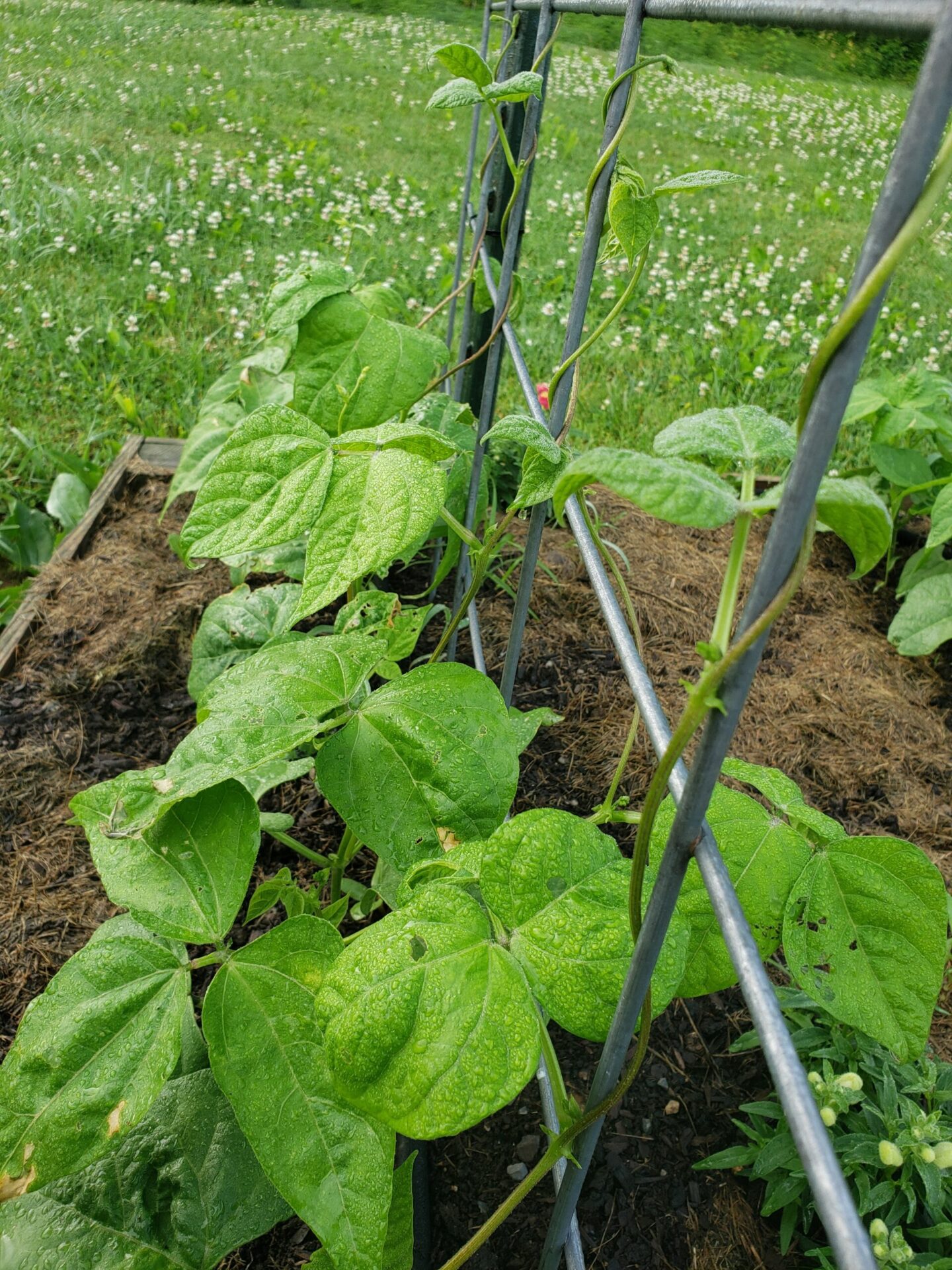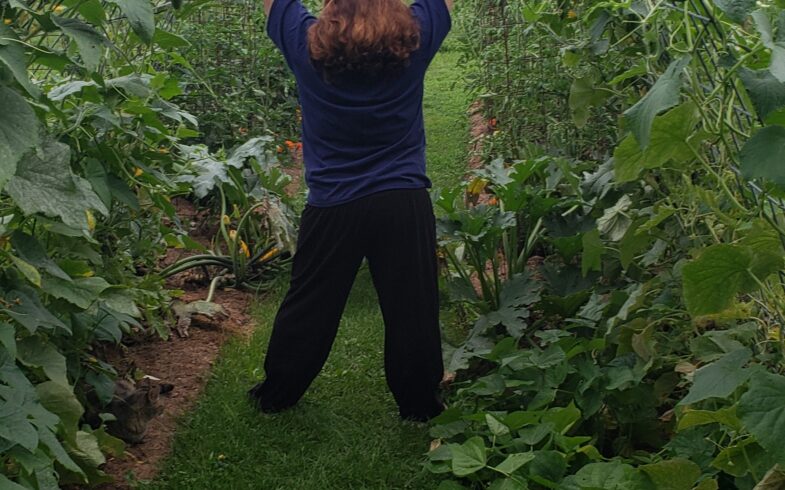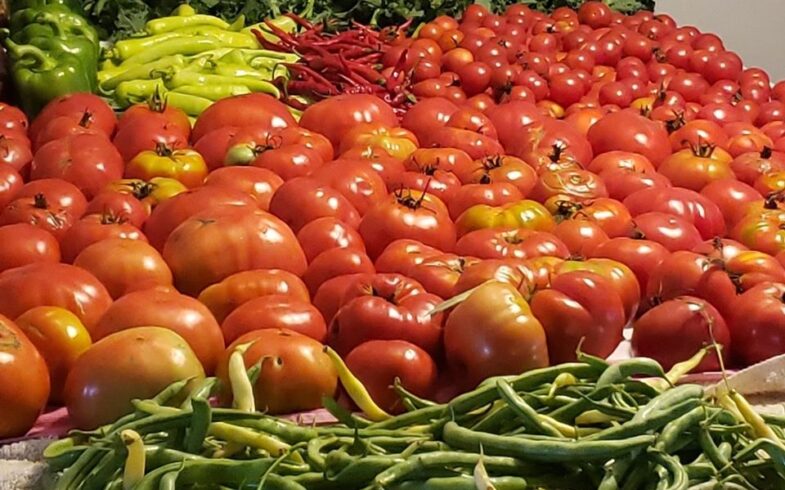Get to know Samantha from Green Pig Farm!!
Well, guys, I finally did it!! I met with Freddy Vasquez from FXV Digital, where we donned headphones and turned on the mics to talk about homesteading. This was the
What Does Green Pig Farm Grow in Their Garden?
We often get questions about what we grow in the garden, so we thought we’d share what we have planted this year, as well as how we preserve it. This
How to Cure, Prep, and Store Garlic
You’ve picked your garlic. But, now what? Let’s talk about how to cure, prep, and store garlic to get the maximum shelf life. (If you want to learn how to
How to Grow Garlic in 3 Easy Steps
Garlic. A cousin to the onion. Culinary deliciousness. Easy to grow. Have you wanted to grow garlic, but haven’t the foggiest on how to start? Here is a step-by-step guide
Making Sauerkraut in a Jar -The Quart Jar Method
What is sauerkraut? Sauerkraut is a German word that means “sour cabbage.” Although this German word appears to be the most popular name for this side dish, fermented cabbage is
Did My Lettuce Bolt? The What and Why of Bolting
You’ve been enjoying lettuce for weeks when all of a sudden you walk out to your garden and see this tall tree-like plant where your greens had been happily growing.
The #1 Garden Item to Plant
BEANS If we had to vote on only one item to grow in the garden, it would be beans. Why? First, beans are loaded with plant-based protein Second, beans can
DIY Inexpensive Vertical Trellis
So, you’ve spent nearly every dollar you have on your favorite seeds, a few bags of compost, and cages for your tomato plants. It’s nothing new this year, but you
Three Easiest and most Versatile Plants for Beginner Gardeners
It’s the Spring of 2020, and we’re experiencing a whole new way of living –at a mask-donning-distance of at least six feet. School and university buildings are closed, and the
The 7 Essential Items You Need to Start Gardening
Are you struggling to find fresh fruits and veggies for your family? Do you see your friends posting pictures of their beautiful produce and have “produce envy?” Are you sick



